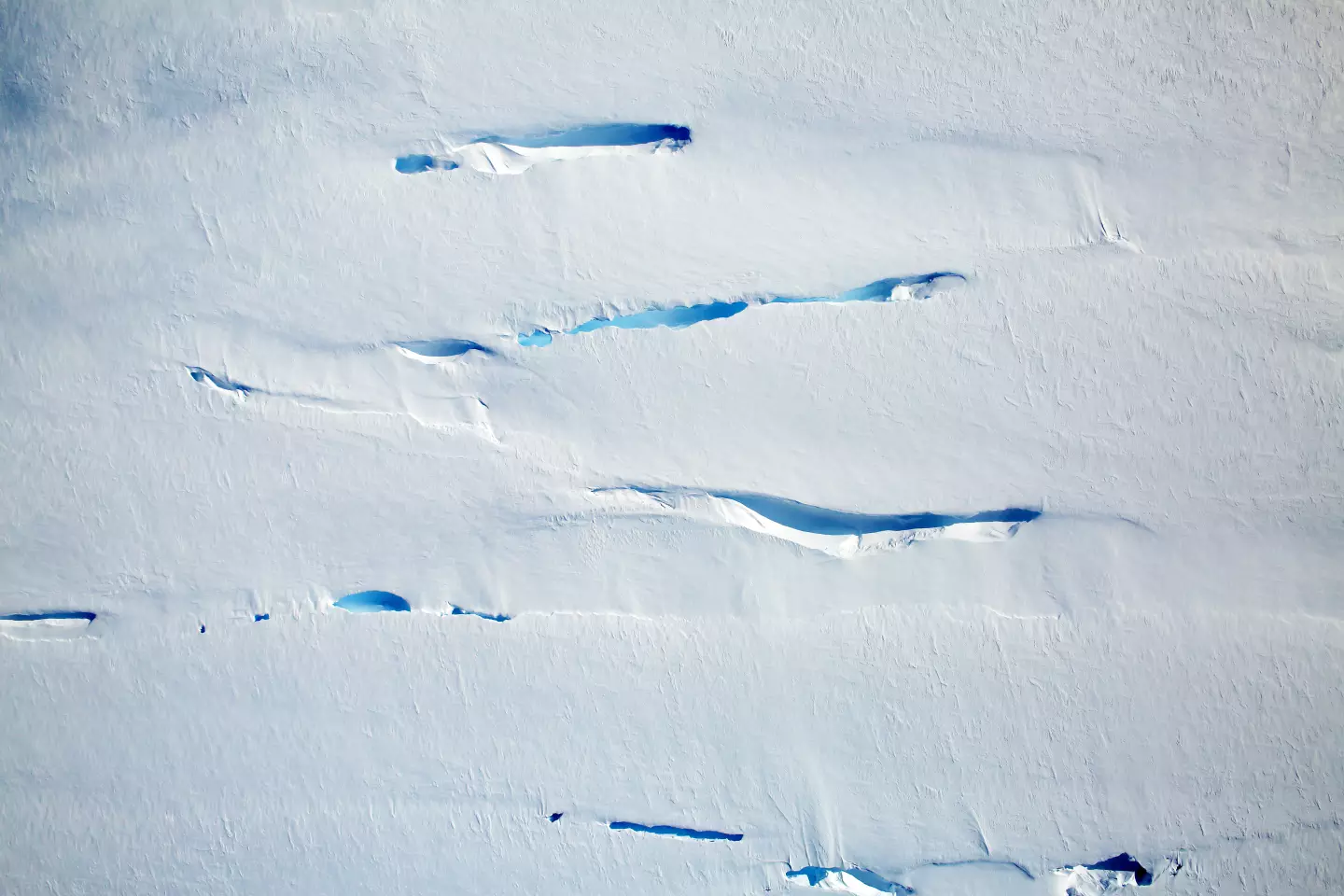
Ice flow, fractures, and damage
Ice sheet models assume a flow law for solid ice. However, damaged/crevassed ice may will effectively be less viscous than undamaged ice. We need a better way to handle this in ice flow models.
Two sub-projects:
- Semi-Empirical: Construct a model of sources and sinks to a damage density field. Calibrate it against observations, account for advection. Could potentially us some form of machine learning.
- Investigate the impact of newly formed crevasses on the vertically integrated viscosity. Pick area of study with substantial changes in ice flow and crevassing with good observations (e.g. a surging glacier). Invert 2d map plane flow model for viscosity for both before vs. after situation. Relate changes to crevasse density changes.
builds on